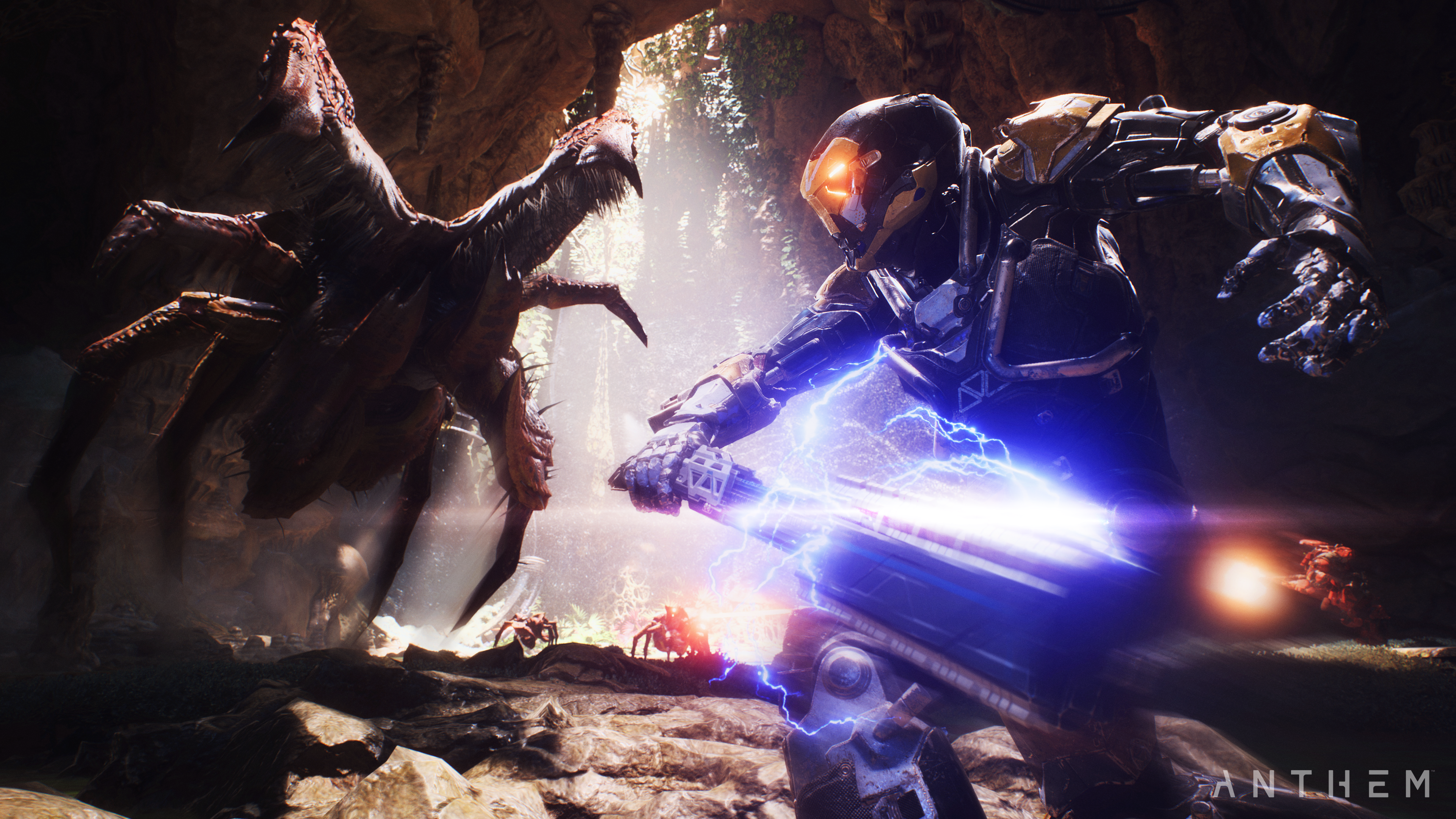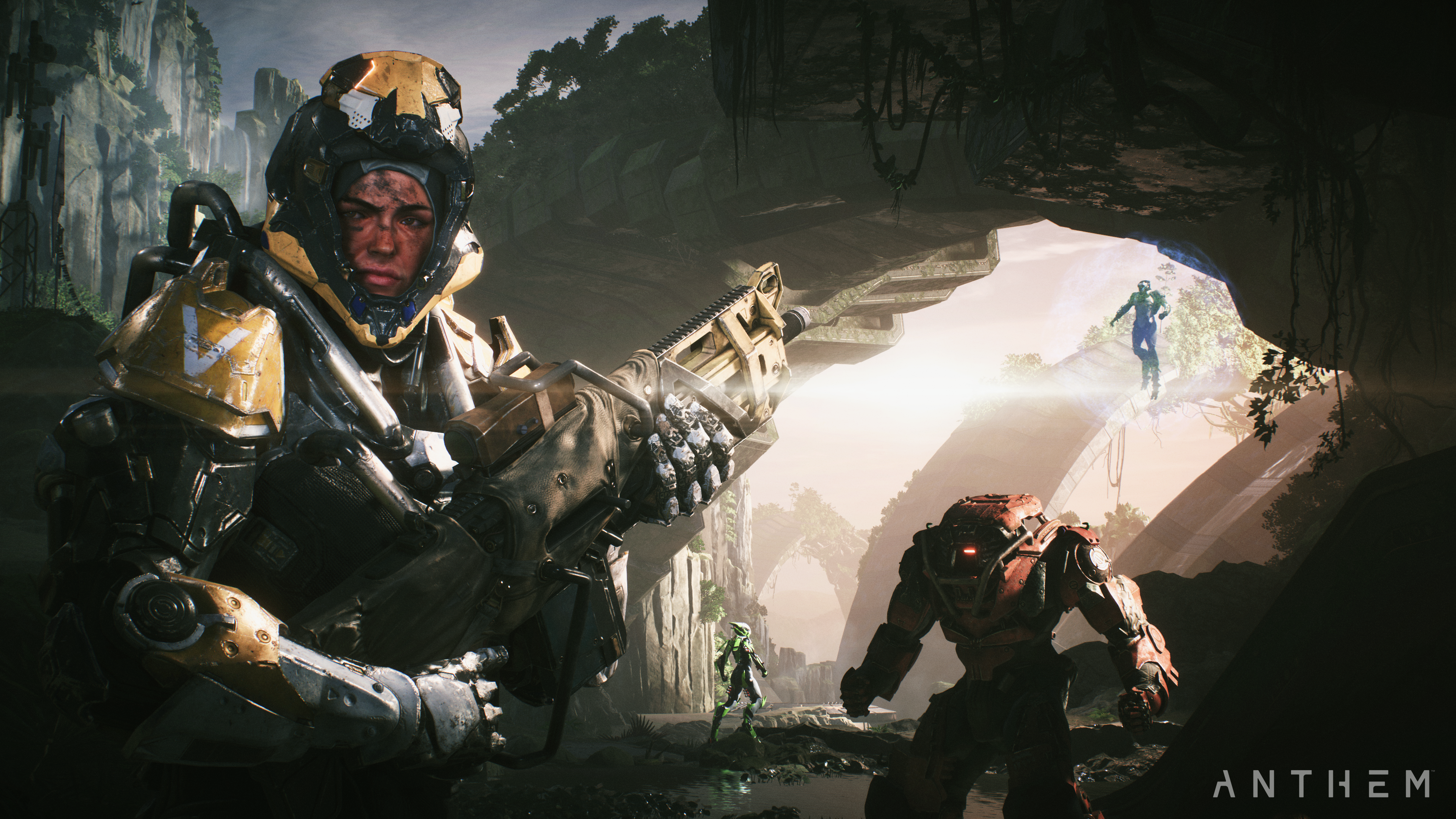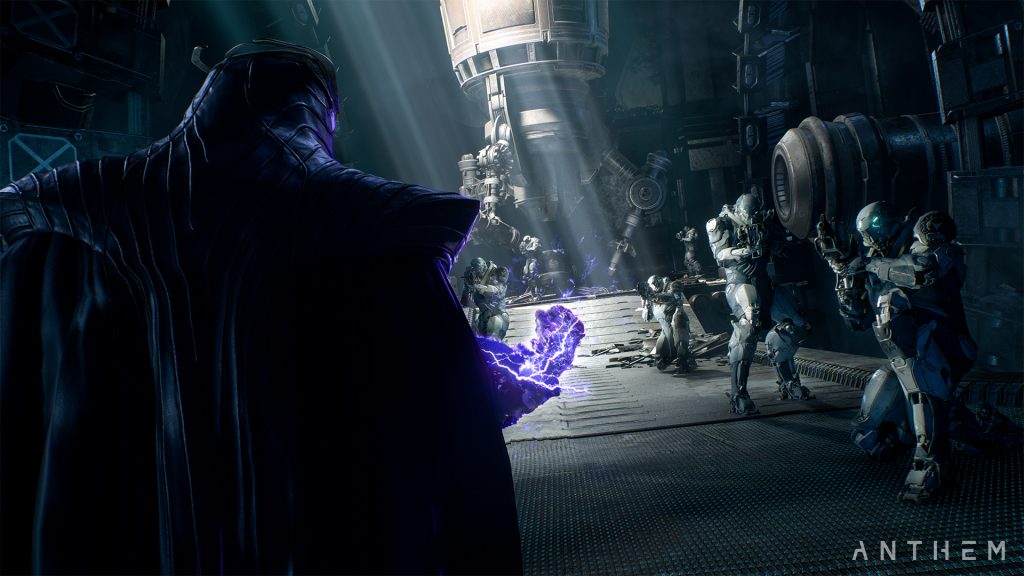From Pacific Rim to MechWarrior, pop culture has a justifiable fascination with human-piloted mechs. Japanese anime is replete with mech pilots and their adventures, and although movies rarely tread this hallowed ground it has been done at least once or twice (see Transformers and Real Steel for ancillary examples of the genre at work). Who among us hasn’t at some point wanted to drive a giant stomping robot through a horde of snarling bad guys? It’s a universal power fantasy.
That’s where BioWare’s latest game, Anthem, comes in. If you’ve been following the pre-release information on this game then you’ll already know that it’s something of a departure from BioWare’s usual fare: it’s not massively story-focused, and it’s not a single-player game, either. Anthem is entirely multiplayer, and while it is possible to engage with the main story content solo, you won’t want to, because what joy there is to be found here is mostly found when playing with others.
That is, of course, not to say that Anthem doesn’t have joy, nor that it doesn’t contain any of the old BioWare magic. The game doesn’t quite have the narrative focus of its developer’s previous efforts, but it does have a certain charm, as evidenced by the wonderful NPC patter in Fort Tarsis, the main hub area from which quests can be completed and in which you’ll do most of your mech maintenance (more of which in a moment).
Fort Tarsis itself is a little empty, however. It’s not quite a ghost town, but if you’re hoping for a populated hub area like Denerim in Dragon Age or the Citadel in Mass Effect then you may be disappointed. It’s clear that Fort Tarsis is mostly intended for players to kick back and enjoy downtime, but here’s the weird thing: Fort Tarsis can’t be explored with other players.
There is an area – the Launch Bay – in which other players will be available to interact with, but the main bulk of Fort Tarsis is largely single-player. This leads to some odd situations where you and a group of friends will be receiving mission-critical dialogue from an NPC, and you’ll all need to tell each other to be quiet while your respective quest-givers talk, which seems a little counterintuitive to multiplayer design.

That’s a minor niggle, though, and it’s clear that BioWare is really placing the emphasis on gameplay this time around rather than story. Mechanically, Anthem is a loot shooter somewhat reminiscent of Destiny or Tom Clancy’s The Division, in which groups of players team up to take on enemies, complete objectives and collect better gear with which to upgrade their Javelin mech.
There are four main Javelin variants: the Ranger, which is an all-rounder; the Colossus, which is a sort of tank-melee class; the Interceptor, which is a rogue-style fast-and-light mech; and the Storm, which is a ranged class. These Javelins are roughly analogous to the classic fighter-mage-rogue triad of RPGs, but they do interesting things with their skills and the ways in which said skills can be combined that we won’t spoil here. BioWare has made the slightly odd decision to gate the other Javelins until the player moves through a certain amount of the story, but the Ranger is probably the best mech with which to learn the game mechanics, so that’s fine.
And what mechanics they are. Whatever else Anthem may get wrong, it absolutely nails the feeling of flying through a three-dimensional space. Controls for the Javelin are initially a little tricky to pick up – especially if you’re playing on a conventional PC setup – but that just makes the eventual payoff and feeling of mastery more worthwhile. Each of the Javelins feels distinctly different to control, so the sense of weight and heft that flying brings will vary from player to player, but there’s an undeniable joy in flinging oneself bodily around a succession of gorgeous arenas (did we mention how pretty the visuals are?) and negotiating co-ordinated tactical strikes with your team.

Visually, the game is an absolute treat, with lush, verdant forests, ruined cityscapes and massive glowing alien artifacts to take in. You’re better off experiencing the game on a PS4 Pro if you have access to one; the loading times will be improved, although we’re not sure how significantly, and the framerate is more stable, allowing for a more consistent experience. Those loading times are a real pain, too, so you will want to reduce them as much as you possibly can.
We strongly, strongly recommend playing Anthem on the biggest and most ostentatious home cinema system you can find, because this is not a game with subtlety woven through it like BioWare’s previous epics. It’s a glorious, huge spectacle, and although it might not quite reach the dizzying heights of the studio’s aforementioned classics, it’s certainly good enough to stand the test of time on its own. One suspects the odd quirk here and there will be ironed out over the next few months, so how much of this review is ephemeral remains to be seen. For now, though, we feel comfortable recommending Anthem to anyone who wants a spectacular loot shooter.
Purchase Now.
This post didnt have a specific author and was published by PS4 Home.


